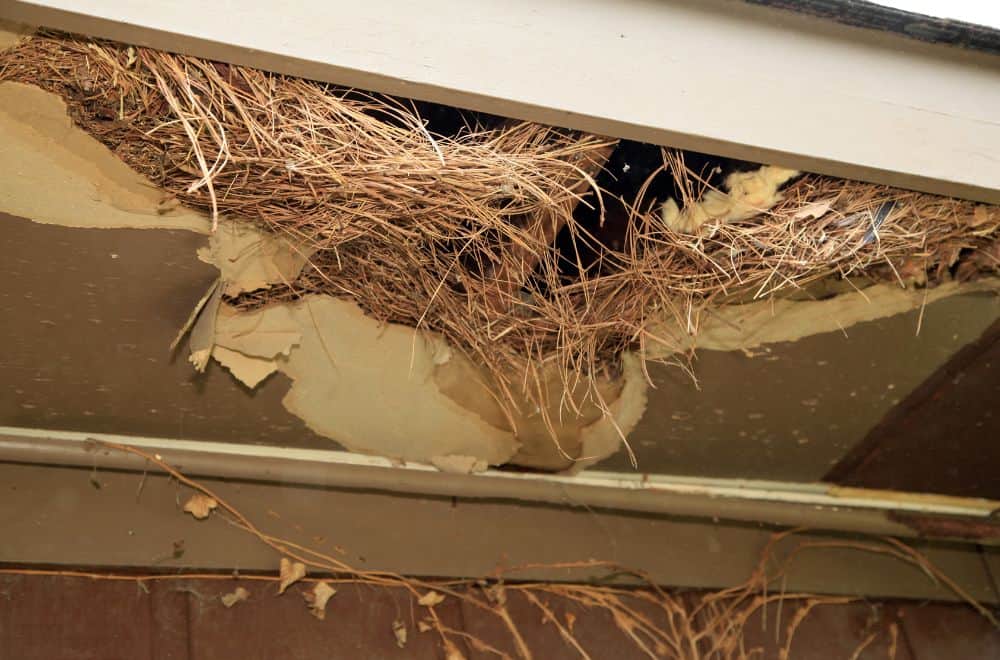Are you worried about having rats in your home? The sight of a single rodent can be terrifying, and a full-blown infestation can be a costly nightmare.
Rats are very secretive and prefer to hide out of sight, only coming out at night to forage for food. If you spot one during the day, there’s probably a full-blown infestation in the house, requiring you to act fast to get rid of these destructive rodents.
Rat nests are also a major sign of rats in the house. The presence of these nests means that the rodents have established a home in your home and have probably caused extensive damage to furniture, clothing, cables, and plastics.
In this article, I will explain the signs you should look for to tell if you have a rat in the house, including the most advanced sign of an infestation: a rat nest, and what you can do to rid your home of these rodents for good.
What Does a Rats Nest Look Like?
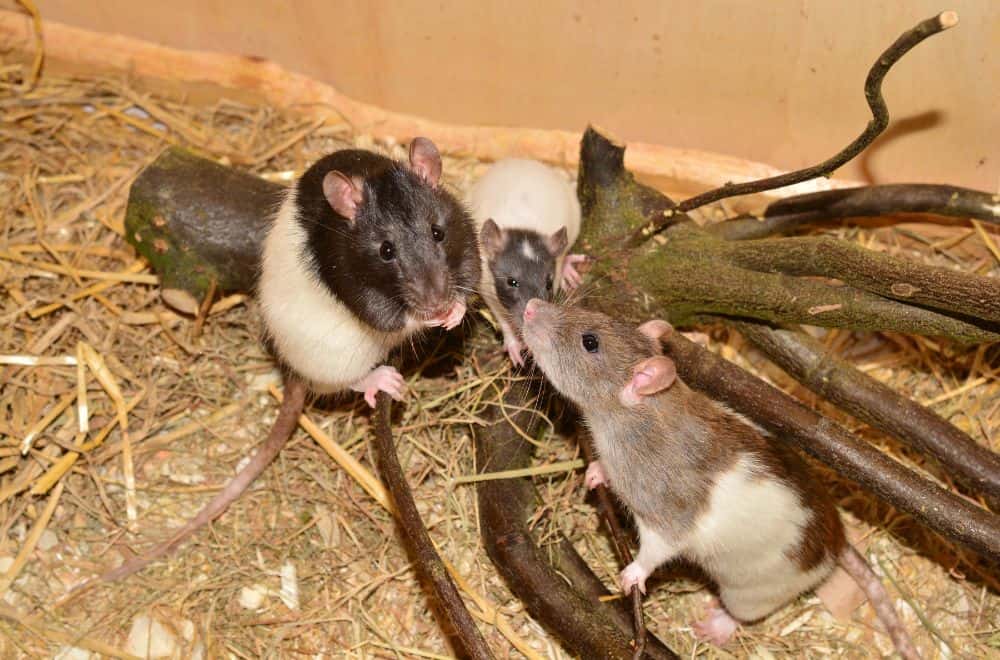
The presence of a rat nest is a sure sign that a large population of rodents lives inside or around your home. Rats are nocturnal and build nests where they can safely hide from predators and aggressors during the day.
It is a sign of a rat nest if you notice materials such as small twigs, cotton, cables, plant remains, or paper piled together. Apart from underground rats, all other rats prefer living aboveground and build their nests around plumbing spots, attics, basements, crawlspaces, underneath porches, and between walls. Rat nests will also appear along ponds, piles of debris, compost pits, garbage dumps, and around trees.
Rats typically build several nests, and the population will shuttle between the various nests. The nest size will depend on the rat’s size; bigger rats will build bigger nests, and small ones will set up a small home for themselves.
For underground rats, you may not see their nests because they burrow holes in the ground. They go out to fetch food and water and return with nest-making materials.
What To Do If You Find A Rat’s Nest
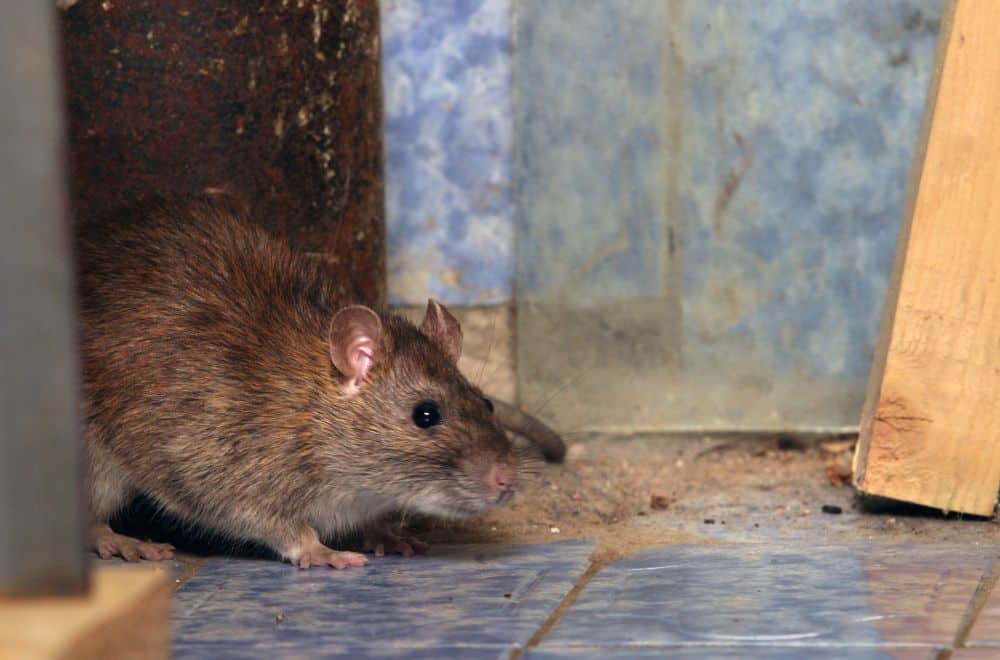
Ideally, you should call a professional pest control service to remove rat nests in your house. Rats are destructive and can transmit deadly disease-carrying parasites and viruses, so it’s best not to handle an infestation on your own, says the United States Environmental Protection Agency.
If you must remove a rat’s nest, wear protective gear, including a respirator, goggles, and gloves. After removing the nests, you should install traps to capture the rodents. Some traps will only bait the rat allowing you to let the rat free elsewhere, while others will kill the rodent immediately.
Clean and disinfect your safety equipment soon after interacting with rats’ habitat to avoid potentially spreading life-threatening parasitic contamination. Ideally, you should dispose of the gloves altogether.
Other Signs Of Rats In The House
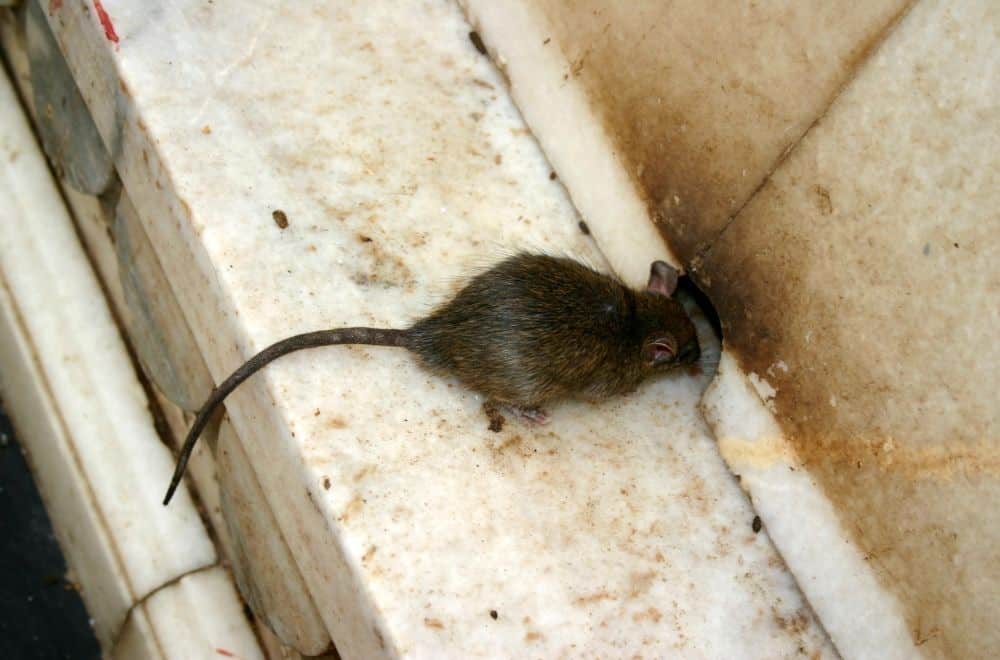
In addition to rat nests, other tell-tale signs of a rat infestation include:
1. Presence of Droppings
Rats tend to release as many as forty droppings in a single location, mostly close to their nest or on a path leading to their nest. If you are trying to find a rat’s nest, a trail of their dropping will often lead you to the nesting and feeding spot.
You may also notice rat feces along wall skirts, inside closets and cupboards, around food tins, and in plumbing spots like sinks. The droppings are usually moist and brownish-black, but they can also be gray and crumbly for older rats.
2. Tracks and Trail Marks Left Behind
Rats prefer to travel through the same route over and over because of their poor eyesight. If these rodents have made it into your house, you will notice trail marks or tracks accompanied by urine stains, feces, and footprints.
Illuminating a flashlight around their suspected path will likely reveal these smudge marks. You can also sprinkle some flour around this area to check for footprints.
3. Muffled Noises, Especially At Night
Rats come out to scavenge at night when they feel safe from predators and aggressors. If these rodents are in your house, you will hear muffled or scratching noises behind walls, furniture, appliances, and closets.
Dogs and cats can sense the presence of a rat in the house. So, pay attention to your pet’s behavior and watch the areas in the house that make them curious or excited. Your furry friends could point you to a rat’s nest, revealing a possible infestation.
4. Foul, Sharp Odor
As you might already guess, rats are quite dirty as they spend a lot of time in garbage bins and compost pits. Their body is typically covered in urine, and their dropping, so these rodents produce a distinct, sharp odor when they are active in your house.
A live rat’s odor differs from a dead one’s. A dead rat will smell like something has decayed behind the walls or inside a shallow hole. The smell of an alive, active, and kicking rat is more pungent due to the ammonia in urine and feces.
Pets also detect this awful smell and follow the odor to find its source. Watch your pets to see if particular areas in the house suddenly excite them, and examine the area yourself for signs of rats.
If you decide to clean up the area yourself, wear protective gear; rats’ urine and droppings can be contaminated with dangerous parasites that can cause life-threatening illnesses.
5. Bite and scratch marks
Rats are notorious for gnawing away at plastic, wood, and cardboard. A sure sign of an infestation is if you notice holes in clothes and food packaging, holes in walls, and gnawed furniture and boxes.
Check if the bite marks are new—older ones are darker than new ones. It could signify a large rat population if you notice both old and new bite and scratch marks.
The bites and scratches can also tell whether you are dealing with mice or rats. Large rats have big teeth and paws, as do the marks they leave behind.
How To Keep Rats Out Of Your House
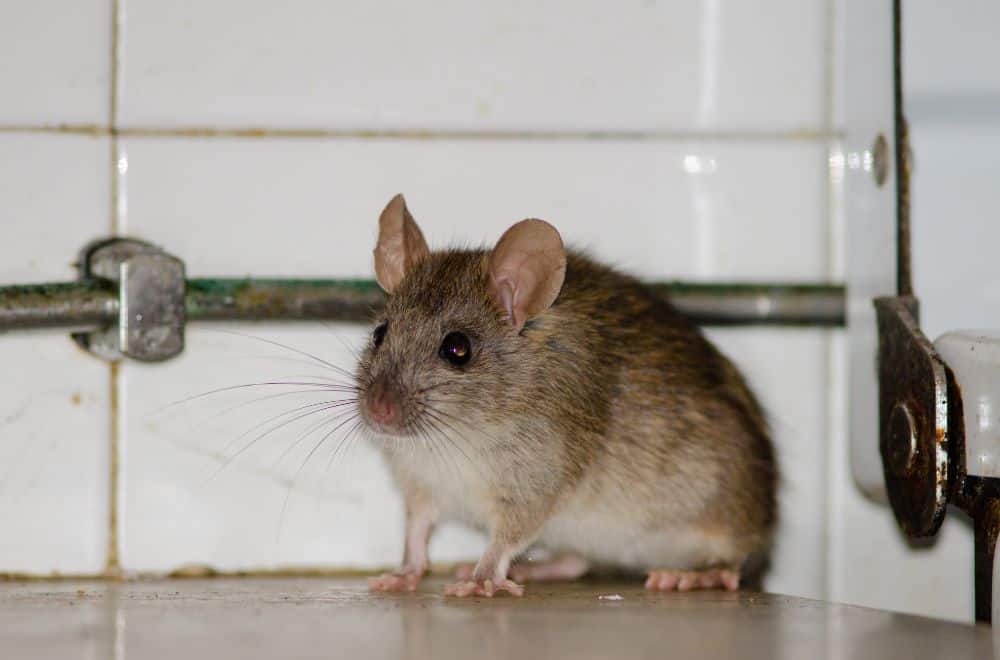
After removing a rat’s nest, you should immediately prevent the rodents from reentering your house. The key thing to remember is that rats are attracted to moisture and food particles; they will breed rapidly where they can comfortably access their food source.
1. Block all entry points around the house.
Rats enter the house through drains, windows, open cracks in the wall, open doors, and the air conditioning system. Inspect your house for cracks and holes through which rodents can pass and seal them. Apply caulk around the edges of your home, windows, and doors. You can also block holes using steel wool, which rats cannot chew on.
If possible, install screens on your doors to keep rats, mice, and other pests from invading your home. Check fan openings and drains and block these as well, as these are favorite rodent entry spots.
2. Rat-proof your garden
In addition to blocking cracks and holes in your house, you should keep rodents away from your garden or yard.
Start by clearing overgrown bushes, old structures, wood piles, and garbage, as they provide a nice warm space for rats to hide and breed.
If you have compost, turn it over regularly to cover new sources of food that may lure hordes of rats to your backyard. Also, empty your garbage bins regularly and cover them with tight-fitting lids to deny rats easy access to food.
3. Plant rat-repellent vegetation
Rats dislike strong scents. So you can keep them away from your garden by planting black pepper plants, rosemary, garlic, marigold, peppermint, and chilies.
Inside the house, you can deter rats with scents from white vinegar, coffee grounds, cleaning ammonia, citronella, eucalyptus oil, mothballs, and bleach.
Tips To Get Rid of Rats
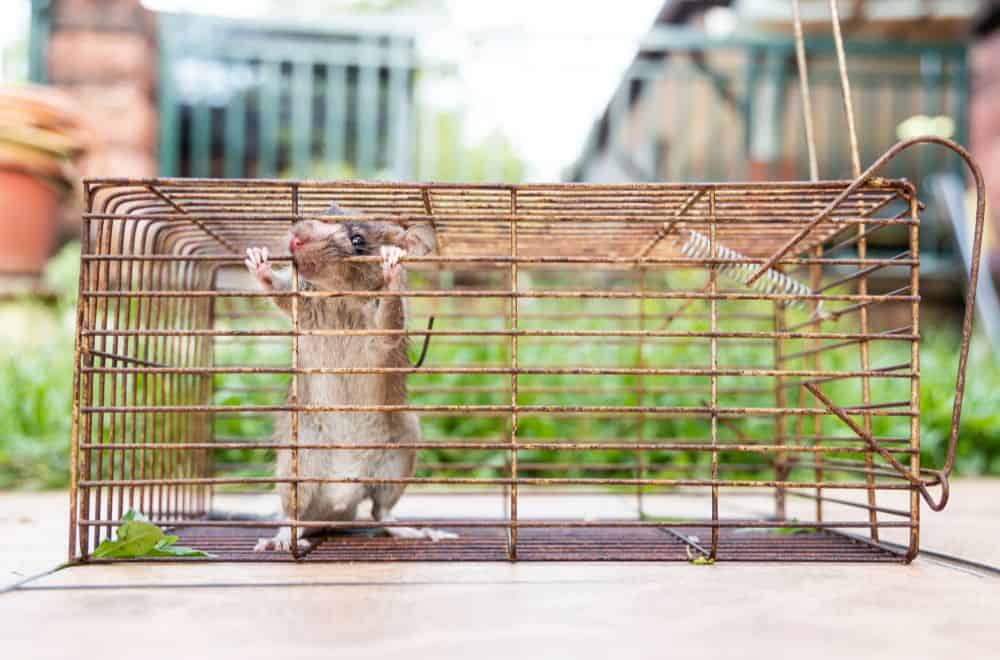
When it comes to pests and rodents, prevention is always better than dealing with a full-blown infestation. But you can take steps to get rid of rats if they have already entered your home.
Install Traps
Traps work best when you have identified where the rats hang out. Check for surefire signs such as droppings, gnawing, trail and runway marks, and nests. Place traps along the path where you suspect rats frequently walk through.
Try to change the trap’s location every few days, but remember that rats only travel a little and generally hang out more or less around the same area.
You have several rat trap options:
Sticky traps: These are wide pads with an adhesive that sticks on a rat’s feet once they step on the pad. Sticky traps may not kill rats, so you must kill them or let them lose elsewhere. These traps are best for capturing small rats and may be ineffective for larger rodents.
Snap traps: Snap traps are simple but can be very effective. When triggered, the bar on this trap snaps and catches the rat. Snap traps are best for getting rid of rats if you have a moderate infestation.
Electric traps: These traps attract rats to a chamber where the rodents are killed through electric shocks. They are also extremely effective, and the best part is that they are safe for the kiddos.
Use Poison Baits
In addition to traps, you can use poison baits. Professional rat removal experts use enclosed poison baits to kill rodents.
These baits feature an enclosed chamber with rat poison inside. The rat dies once it enters the chamber and gets in contact with the poison. The poison in the bait is covered, so it is safe for kids and pets.
Use Natural Methods
Two effective natural methods to eliminate rats in your home are essential oils and keeping a predator such as a cat.
Strong, pungent smells such as eucalyptus, rosemary, peppermint, and black pepper repel rats. These scents also cover the pheromone trails rats use to find their way around.
Mix ten to twenty drops of essential oil with a half cup of water and spray it along wall skirts, doors, and windows to keep rats away from the house. While essential oils are safe and can repel rats, using them with other methods, such as traps, is best.
Lastly, you should consider getting a cat if you do not have one. Cats can detect rodents quickly and aggressively hunt down rats, preventing subsequent infestations.
FAQS About Rat Nests and Getting Rid of Rats in The House
What happens if you disturb a rat’s nest?
It is best not to disturb a rat’s nest, especially if the rodents are in there. The best cause of action is to remove the rats first or ensure there are no rats in the nest before attempting to remove them. Rats can be aggressive if you disturb their habitat, and the airborne pathogens they transmit can be extremely harmful to humans. Take every precaution if you decide to remove rat nests on your own.
Where do rats nest?
Rats’ favorite nesting place is inside holes. But you can also find their nests inside walls, attics, lofts, and basements. These rodents gnaw on materials such as cardboard, clothes, insulation, and plastics, which they use to build nests.
What kills rats the fastest?
Snap traps are the fastest way to kill and get rid of rats in the house. As long as you install the trap in the correct location where rats frequent, you can use this method to control a mild to moderate infestation. Place traps under a box or crate to prevent your small pets from getting trapped.
